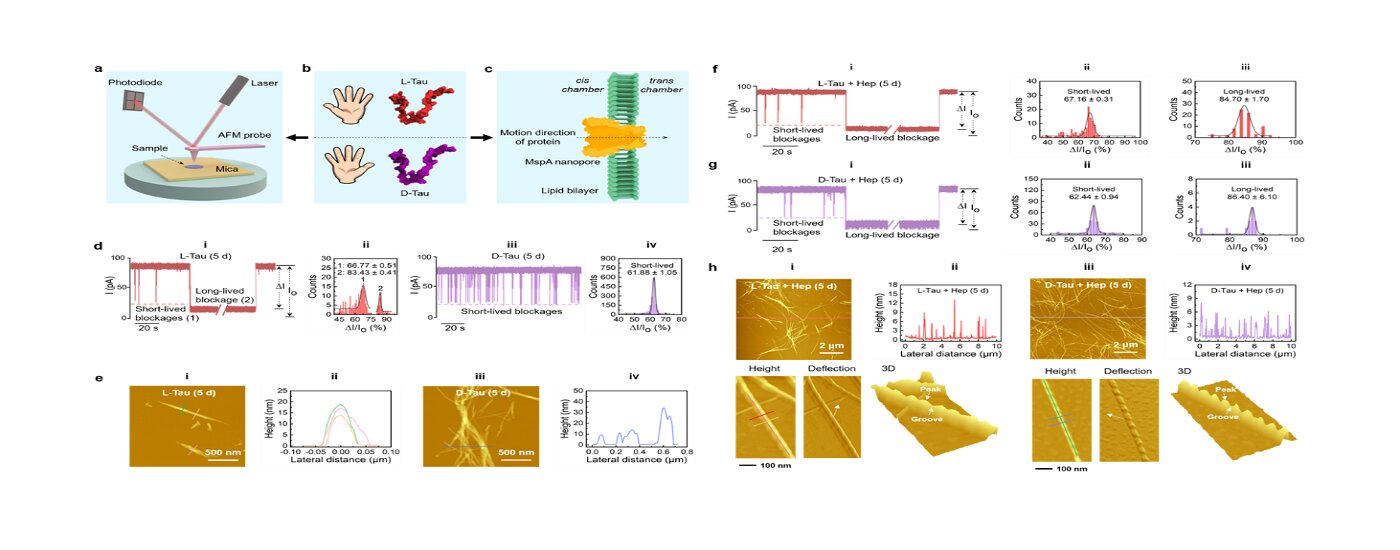Understanding the effects of chirality and cofactors on neuropathogenic protein self-assembly has garnered much attention due to its close relevance with neuro-degenerative diseases. However, hitherto chiral Tau self-assembly and cofactors-mediated chiral Tau self-assembly are unexplored terrains. Recently, researchers in Chongqing Institute of Green and Intelligent Technology, Chinese Academy of Sciences (CIGIT, CAS) report the observation of self-assembly of synthesized natural levorotary (L-) enantiomer and its mirror image—dextrorotary (D-) enantiomer of a crucial Tau fragment (residues 391-426), as well as heparin-mediated self-assembly of these Tau enantiomers, with atomic force microscopy (AFM) and a biological nanopore sensor. The combination of the two techniques allows us to visually and electrochemically monitor the self-assembly behaviors. Researchers observe that L-Tau enantiomers have a slight tendency to form small fibril aggregates while D-Tau enantiomers tend to form densely packed fibril aggregates. Interestingly, heparin mediates L-Tau enantiomers to form right-handed twisted polymorphic fibrils with pronounced fibril aggregates coexisting, but mediates D-Tau enantiomers to form abundant left-handed twisted polymorphic fibrils with sparse aggregates coexisting. Circular dichroism spectra indicate rich β-sheets formed in either assembly of heparin-mediated Tau enantiomers. The above observations manifest the significant effects of chirality and cofactor (i.e., heparin) on the self-assembly of Tau enantiomers. Collectively, this work sheds new insights into the regulation of Tau self-assembly by chirality and cofactors, and proves the combination of AFM with a biological nanopore sensor an effective biophysical platform for label-free and high-definition study of protein self-assembly.
This work is published in Materials Today Physics (2024,42,101370.). Wei Chen and Yunhao Chen are the first authors, Prof. Dr. Liang Wang and Prof. Dr. Huabin Wang are corresponding authors. The work was supported by the National Key Research and Development Program of China, Chongqing Talents-Exceptional Young Talents Project, The Youth Innovation Promotion Association of Chinese Academy of Sciences.

Figure 1. Nanoscale observation of heparin-mediated self-assembly of chiral Tau enantiomers.


